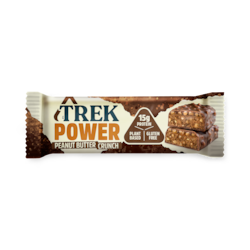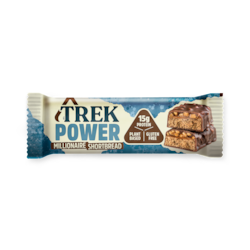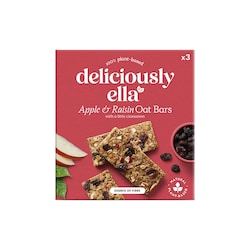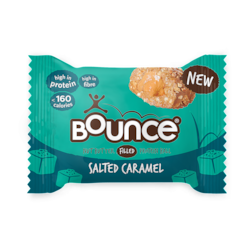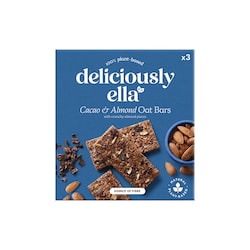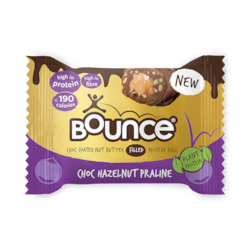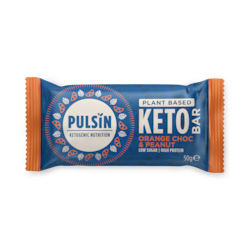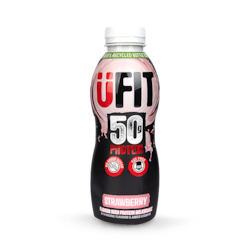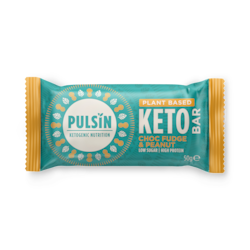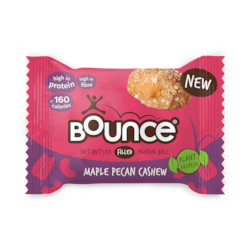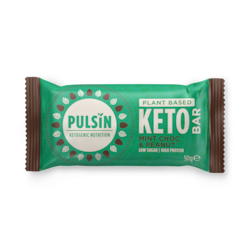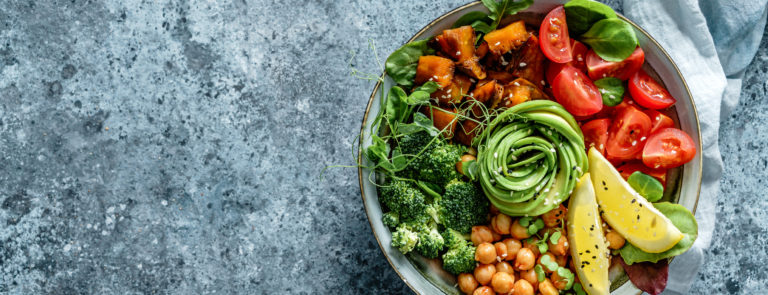20% off £30
Veganuary – what is it?
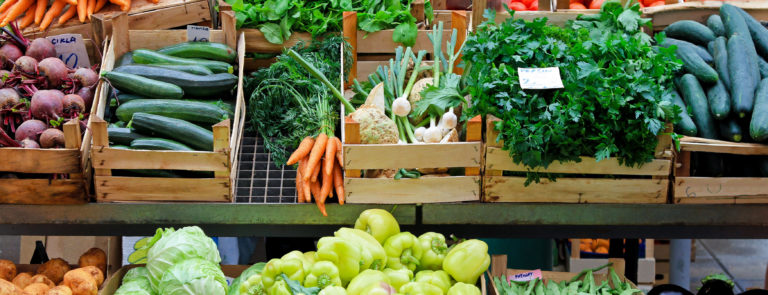
Have you heard more and more about Veganuary in the news, on the radio, on your social feeds, and elsewhere, and are now feeling more than a bit intrigued by it?
Maybe you’ve caught snippets of what it’s all about here and there and are keen to fill in those blanks, or maybe you know zero to very little about it, and want to learn all there is to know about it?
This article is all about Veganuary - what it is, why it happens, who does it, the benefits of being vegan and more.
We hope you find it insightful and it helps fill in any gaps you may have about Veganuary and veganism overall.
What is Veganuary?
Veganuary is a combination of veganism and January.
As the name suggests, the campaign is centred around encouraging people all over the world to switch to a plant-based diet during the month of Jan.1
Since the campaign was launched by Veganuary – which is actually a charitable organisation as well as the name of the initiative - in 2014, the number of people taking on the challenge has continued to rise year on year.
At the last count, more than 400,000 people took part in Veganuary and many more are anticipated to follow in their footsteps as the years go by.
Veganuary key milestones – at a glance
- 1,000,000 participants since 2014
- 192 countries around the world
- 1,200+ new vegan products and menus were launched for Veganuary 2020
- 98% of people would recommend Veganuary to a friend
- 600+ businesses took part in the campaign in 2020
- Patrons include Joaquin Phoenix, Paul McCartney and Chris Packham
What can I eat as a vegan?
Generally speaking, vegans eat food that comes from plants.
They do not eat any food that’s an animal or happens to have been produced by animals.
There are lots of reasons why people may choose to go vegan.
They range from animal welfare and lifestyle choices to helping protect the environment.
If you are following a vegan diet, you can eat:
- Fruit and vegetables.
- Legumes such as peas, beans, and lentils.
- Bread, rice, and pasta.
- Dairy alternatives, such as soy milk, coconut milk and almond milk.
- Nuts and seeds.
- Vegetable oils.
If you are following a vegan diet, you cannot eat:
- Chicken, duck and other poultry.
- Beef, pork, lamb, and other red meat.
- Fish or shellfish such as crabs, clams, and mussels.
- Honey.
- Eggs.
- Cheese and butter.
- Other dairy products, such as milk, cream and ice cream.
- Mayonnaise (because it’s made from egg yolks).
If you decide to use Veganuary as your springboard into veganism and sign up for it, you’ll receive a whole batch of recipes and easy meal plans to help you complete the 31-day pledge.
This may be the ideal option for helping you understand what you can and can’t eat on a vegan diet initially, and how you can turn what you can eat into tasty snacks and meals that you may find you decide to continue with long after the Veganuary campaign has ended.2
What are the benefits of a vegan diet?
What are the advantages of following a vegan diet plan?
There are benefits, for people who go vegan, as well for animals and the planet.
As for those who’ve taken part in Veganuary and embraced veganism for a month, the benefits of doing so are widespread.
According to the Veganuary 2020 survey of participants:
72% planned to stay vegan because:
- They’d learned more about veganism
- Going vegan was easier than expected
- They felt that their health had improved
- They’d discovered great-tasting food3
Other vegan benefits include:
- It can help you to maintain normal weight - vegans reportedly have the lowest BMI when compared to meat-eaters, vegetarians and pescatarians. This could be because vegan diets are made up of lots of nutrient-dense, filling foods. This includes beans, legumes, whole grains, fruit and vegetables. These foods are also high in fibre.4
- Helping the planet – a 2018 study conducted by Oxford University found that, ‘avoiding meat and dairy is the single biggest way to reduce your impact on Earth’. It also discovered that plant-based diets reduce the emissions involved in food production processing, packaging, and transport by up to 73% compared to non-plant-based diets.5
- Saving animals - every year in the UK, approximately 2.6 million cattle, 10 million pigs, 14.5 million sheep and lambs, 80 million fish and 950 million birds are slaughtered for human consumption. Switching to a vegan diet, reduces this reliance on solely breeding and rearing animals for people to eat.6
- Saving money – believe it or not, meat, particularly organic meat, is more of an expensive diet than a diet that’s made up of plant food. Research by financial advice company, Cleo, found that after following a vegan diet for three months, meat eaters who go vegan end up spending £21 less per month on eating out and groceries.7
What are the downsides to going vegan?
You’ve heard a lot about the positives, but what about the negatives? Are there any?
There are some potential negatives, which are mainly associated with making sure you’re getting all of the vitamins, nutrients and minerals you need from your diet.
Not eating enough complete protein
Meat, dairy, and egg are prime sources of protein, and you need to make a conscious effort to replace your animal-protein intake with adequate plant-based alternatives.
Vegan sources of protein include oatmeal and seeds (12g of protein) and vegetarian sausages with potatoes, peas, and broccoli (30g of protein).
Not getting enough calcium
Because you’re no longer eating the most obvious calcium food sources, such as cheese, milk, and butter.
Vegan sources of calcium include beans (kidney and soya), kale, watercress, broccoli, sweet potato, tofu, almonds, butternut squash.
Not having enough iron
Research has indicated that people who eat a plant-based diet are more likely to have low iron levels compared to people who eat meat.
Vegan sources of iron include oats or fortified cereal with dried seeds and fruit, edamame beans, lentils, chickpeas, tofu, tempeh quinoa, watercress, kale, sesame seeds, and dark chocolate.
Not getting enough Vitamin B12
This particular vitamin is present in animal products and is made by animal bacteria. However, if you’re not eating animal products, then what do you do to get B12?
Vegan Vitamin B12 sources include yeast extract and breakfast cereals and plant-based milk that have been fortified with Vitamin B12.
How to go vegan?
If you’ve got the willpower and your mind’s made up, you could just decide to go vegan overnight, and manage to stick to your new diet, just like that (which is pretty impressive).
However, changing your diet, which for some can mean rethinking what you’ve always eating for many years, is a bit of a major change that takes dedication, time and perseverance to a) make happen and b) really commit to.
Fortunately, the team at Veganuary have come up with some practical pointers for helping people get started with going vegan for a month, and potentially longer.
They include:
-
Plan what you are going to eat (before you eat)
The best way to stick to any new eating regime is to pre-plan your meals beforehand.
What are you going to have for breakfast, dinner and tea and snacks, and do you have all of the ingredients you need or are you missing some?
Weekly meal planners are really useful for mapping out what you are going to eat, what you need to make those dishes and giving you enough time to get the ingredients you need to rustle them up.
-
Do it bit by bit
If the idea of going vegan seems like too much of a massive change for you, but you really want to give it a try, then ease yourself into it.
Still eat non-vegan meals, and have a few vegan alternatives every now and then.
Gradually increase how much vegan food you’re eating vs. non-vegan food at your own pace.
-
Give your favourite dishes a vegan twist
Going vegan doesn’t necessarily mean you have to stop eating everything you’d normally eat.
It’s possible to eat your favourite dishes, but make them using vegan ingredients instead.
For instance, you can whip up a mean lasagne, using soya mince and plant milk for the bechamel.
Or you can have a vegan bacon or sausage sandwich, or jacket potato and vegan cheese.
-
Stock up on vegan snacks
When you’re out and about, and happen to be somewhere that doesn’t have vegan food options on the menu, it can be easy to fall off the vegan bandwagon.
One easy way you can avoid this is by taking some vegan snacks out with you – a pre-prepared sandwich, some fruit or a bag of nuts maybe.
-
Shop around for vegan alternatives
There are lots of vegan food alternatives, and the good news is, the ranges in most supermarkets are growing by the day.
You may have tried one brand of almond milk, but not quite liked it, or a block of vegan cheese, and wasn’t sure about the texture.
Don’t give up, there are lots of different vegan alternatives out there – e.g. almond, oat, hemp, coconut and soya milk – so keep trying them, and hopefully you’ll find something that you like.
-
Tap into the support that’s out there
There’s a whole load of useful tips, support and guidance on the Veganuary website.
There are also lots of other wider resources to tap into too.
The HappyCow app will show you where all of your local vegan-friendly restaurants, cafes and shops are, while there are also loads of local vegan enthusiast groups on social and online.8
How do I create a vegan meal plan?
Well, using a vegan meal planner, as recommended by Veganuary is a very good place to start.
Then, once you have one of these or a similar sort of system, it’s time for the exciting part, working out what you are going to eat over the coming days, weeks and months!
Here are some breakfast, lunch and dinner ideas, courtesy of the Veganuary campaign.9
Vegan breakfast ideas
1
Oatmeal with plant milk and topped with seeds, nuts and fruit.
2
Toast and vegan butter or peanut butter, avocado, slice tomato or dairy-free cheese.
3
Full English breakfast – made with vegan sausages and bacon, hash browns, tofu, mushrooms, tomatoes and baked beans.
Vegan lunch ideas
1
Soup and a roll – homemade or shop bought.
2
Pasta salad or a hot pasta dish.
3
Jacket potato with salad or dairy-free cheese, baked beans or chilli.
Vegan dinner ideas
1
Spaghetti Bolognese – made with lentils or soya mince.
2
Steak and chips – yes, steak! You can get vegan steak now.
3
Bangers and mash – with fresh vegetables, gravy and mustard.
Veganuary is a whole new world in itself, one in which we’re all welcome to embrace and can be as long or as short as we choose for it to be.
Do you like the idea of going vegan, but aren’t sure about what people are going to say?
Have a read of this, ‘How to tackle the negativity of being a vegan'
The advice in this article is for information only and should not replace medical care. Please check with your GP or healthcare professional before trying any supplements, treatments or remedies. Food supplements must not be used as a substitute for a varied and balanced diet and a healthy lifestyle.
Last updated: 6 December 2021
- https://veganuary.com/
- https://veganuary.com/try-vegan/
- https://veganuary.com/veganuary-2020-official-survey-results/
- https://www.nature.com/articles/ejcn2013248
- https://www.ox.ac.uk/news/2018-06-01-new-estimates-environmental-cost-food
- https://www.hsa.org.uk/faqs/general#n1
- https://www.bbc.co.uk/news/business-47064626
- https://veganuary.com/eating-guides/getting-started/
- https://veganuary.com/eating-guides/getting-started/


